Procurement 101: Collaborative planning, forecasting, and replenishment (CPFR) – How it works

Table of Contents

Facing challenges in procurement and supply chain efficiency?
Collaborative Planning, Forecasting, and Replenishment (CPFR) might be the solution. Through real-world successes like Procter & Gamble and Wal-Mart, which saw inventory reductions and forecast accuracy improvements, to Cisco’s 45% inventory cut, CPFR proves its worth.
This strategy is not just about technology but also trust, commitment, and strategic collaboration, aiming to streamline operations and enhance partner relationships for procurement managers.
The Essence and Evolution of CPFR
At its core, CPFR is a business practice that harmonizes the efforts of various trading partners in the planning and fulfillment of customer demand. The concept isn’t just a buzzword; it’s a strategic approach that links sales, marketing, and supply chain execution processes to boost availability while minimizing inventory, transportation, and logistics costs.
Originating from the Efficient Consumer Response (ECR) initiative, CPFR has evolved to address the limitations of traditional manufacturer-retailer relationships, which were often characterized by a lack of coordination and information sharing, leading to inefficiencies and increased costs.
Implementing CPFR: A Strategic Overview
Implementing CPFR requires a structured approach, starting with a clear understanding of its key components:
- Joint Business Planning: The initial stage where partners establish mutual goals and define strategies for achieving them. This process sets the stage for all subsequent CPFR activities, ensuring that every action aligns with the shared objectives of improving supply chain efficiency and meeting consumer needs.
- Demand and Supply Management: This involves the continuous exchange of forecast data and inventory levels between partners. By leveraging shared information, companies can make informed decisions, leading to more accurate demand forecasts and efficient inventory management.
- Execution: The practical application of the plans and forecasts, including order fulfillment and replenishment activities. This stage focuses on the physical movement of goods, ensuring that products are available where and when they are needed.
- Analysis: Continuous monitoring and analysis of outcomes versus expectations. This step involves reviewing performance metrics to identify areas for improvement and adjust strategies accordingly.
The benefits of implementing CPFR are compelling, including improved forecast accuracy, increased sales, inventory optimization, and enhanced partnerships between trading partners.
However, successful adoption hinges on several factors, including commitment from senior management, clear definition of roles and responsibilities, willingness to collaborate, readiness for a ‘win-win’ situation, and robust technical infrastructure.
Enhancing Collaboration Through CPFR
Trust and robust technological infrastructure form the bedrock of successful CPFR implementation. In a landscape where real-time data sharing and collaboration are paramount, establishing trust among partners ensures a seamless flow of information and fosters a cooperative environment.
Similarly, the deployment of advanced IT solutions and ERP software streamlines communication, mitigates risks associated with manual data handling, and enhances overall process efficiency.
Key Factors for Effective CPFR Implementation
To unlock the full potential of CPFR, several critical factors must be meticulously managed:
- Senior Management Commitment: The buy-in and active support from top management are crucial for driving the initiative forward. It underscores the strategic importance of CPFR and ensures the allocation of necessary resources.
- Clearly Defined Roles and Responsibilities: Establishing clear roles for each stakeholder prevents overlaps and confusion, facilitating smoother execution of CPFR processes.
- Willingness to Collaborate: A genuine readiness to work together, share data, and leverage collective strengths can significantly amplify the benefits of CPFR. This cultural shift towards mutual success is essential for overcoming traditional competitive barriers.
- Technical Infrastructure: The backbone of any CPFR initiative is its technical infrastructure, which includes data analytics tools, cloud computing platforms, and collaborative software. These technologies enable efficient data sharing and real-time decision-making.
Overcoming Challenges in CPFR
Despite its numerous benefits, CPFR is not without challenges. Common obstacles include:
- Data Sharing Concerns: Hesitation to share sensitive data can hinder the effectiveness of CPFR. Overcoming this requires establishing mutual trust and clear data governance policies.
- Alignment of Objectives: Ensuring all parties have aligned objectives can be challenging but is essential for the success of CPFR. This alignment prevents conflicts of interest and focuses efforts on common goals.
- Change Management: Implementing CPFR often requires significant changes in processes and mindsets. Effective change management strategies are necessary to address resistance and foster a culture of collaboration.
Leveraging Technology for CPFR Success
Information technology plays a pivotal role in facilitating CPFR by providing the tools needed for efficient data exchange and process management. Key technological enablers include:
- Collaborative Platforms: These platforms offer a shared space for partners to plan, forecast, and replenish inventory collaboratively. They help in breaking down silos and promoting transparency.
- Analytics and Big Data: Leveraging analytics and big data enables more accurate forecasting and decision-making by analyzing trends, patterns, and historical data.
- Cloud Computing: Cloud-based solutions offer scalability, flexibility, and accessibility, allowing partners to access shared data and applications from anywhere, at any time.
Realizing the Full Potential of CPFR: Industry Success Stories
While the theoretical benefits of CPFR are compelling, real-world applications provide the most convincing evidence of its effectiveness. Let’s look at two noteworthy examples where CPFR has been instrumental in transforming procurement and supply chain operations:
Procter & Gamble and Wal-Mart Partnership
One of the earliest and most celebrated examples of CPFR in action is the collaboration between P&G and Wal-Mart. This partnership focused on sharing information to better forecast demand and optimize inventory levels.
The result was a significant reduction in out-of-stock situations, improved supply chain efficiency, and a stronger partnership between the two giants. This collaboration has been widely recognized as a benchmark for successful CPFR implementation, leading to improved forecast accuracy by up to 20% and inventory reductions of 10-40% across various product categories.
Cisco’s Collaborative Planning Initiative:
Cisco Systems, a global leader in networking technology, implemented CPFR to enhance visibility across its supply chain. By collaborating closely with its suppliers and customers, Cisco managed to reduce its inventory levels by over 45%, while simultaneously improving customer satisfaction rates.
This was achieved through the use of advanced analytics and collaborative tools that enabled more accurate demand forecasting and efficient inventory management.
How CADDi Drawer Can Help
CADDi Drawer, a cutting-edge digital platform designed for the manufacturing and procurement sectors, directly addresses the pressing challenges in data management within CPFR. Its capabilities can provide an innovative solution to many of the hurdles discussed earlier, particularly those related to data inconsistency, fragmentation, and the lack of a centralized system for data sharing and analysis.
Streamline activities in the procurement process
The following features enable you to streamline the time-consuming tasks of data collection and organization in procurement operations.
- Price data and supplier information can be automatically linked to each drawing and can also be exported together.
- By using keyword searches combined with similarity searches, the time spent searching for drawings and data in procurement tasks can be reduced.
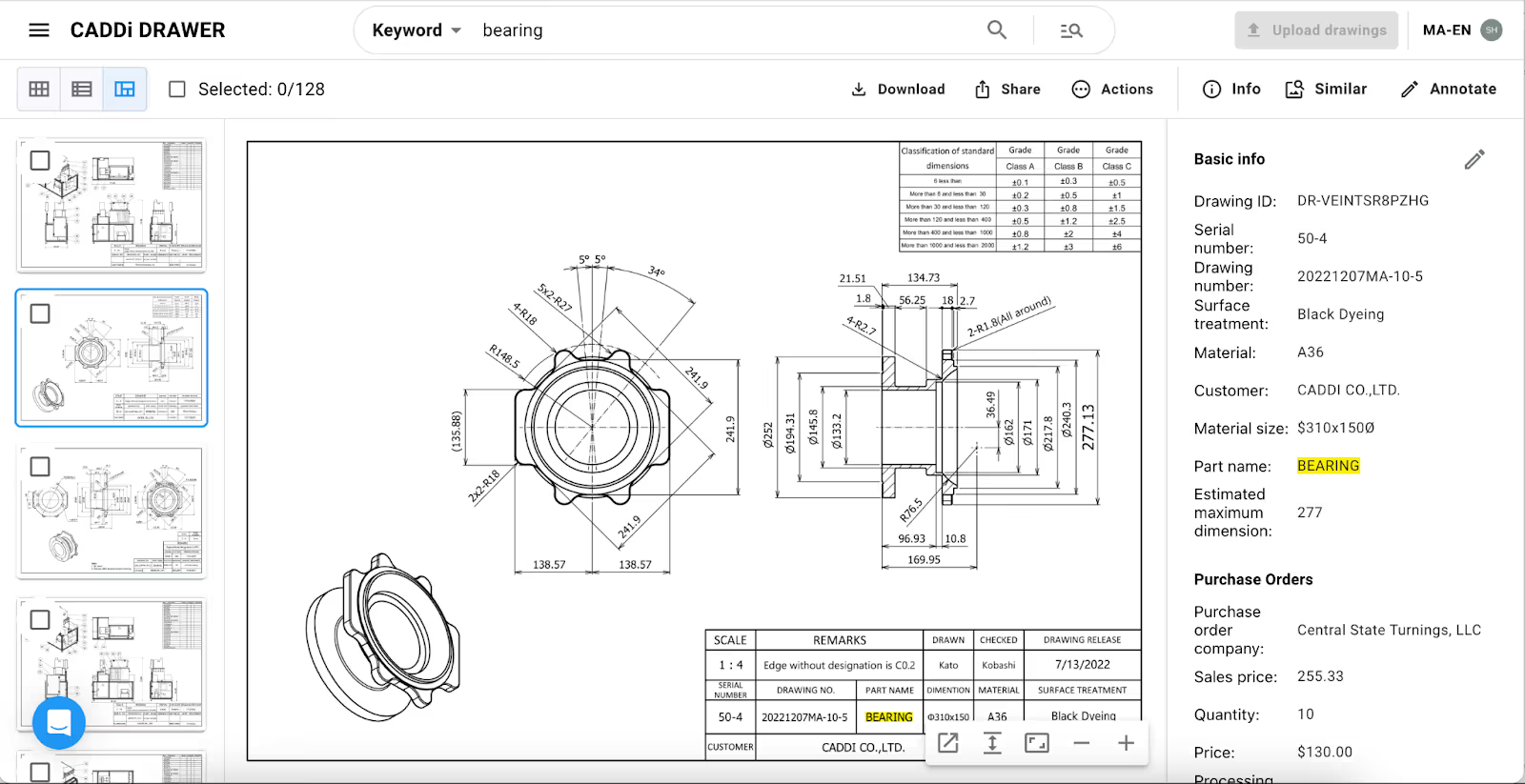
Enhancing Collaboration and Standardization
Collaboration and standardization across the supply chain are crucial for overcoming visibility challenges. CADDi Drawer fosters collaboration by enabling easy sharing and access to data among all supply chain participants. This collaborative environment ensures that everyone is on the same page, enhancing coordination and efficiency. Additionally, the platform supports data standardization, which is vital for integrating data from diverse sources and ensuring that it is comparable and actionable.
CADDi Drawer serves as a System of Insights (SoI), designed to leverage data primarily managed and stored by Systems of Records (SoR), like those represented by ERPs. Utilizing data stored in SoRs and data extracted and structured from drawings by CADDi Drawer, it supports procurement intelligence processes, including analyses and data processing for supplier selection and management, RFQ creation, and quote evaluations.
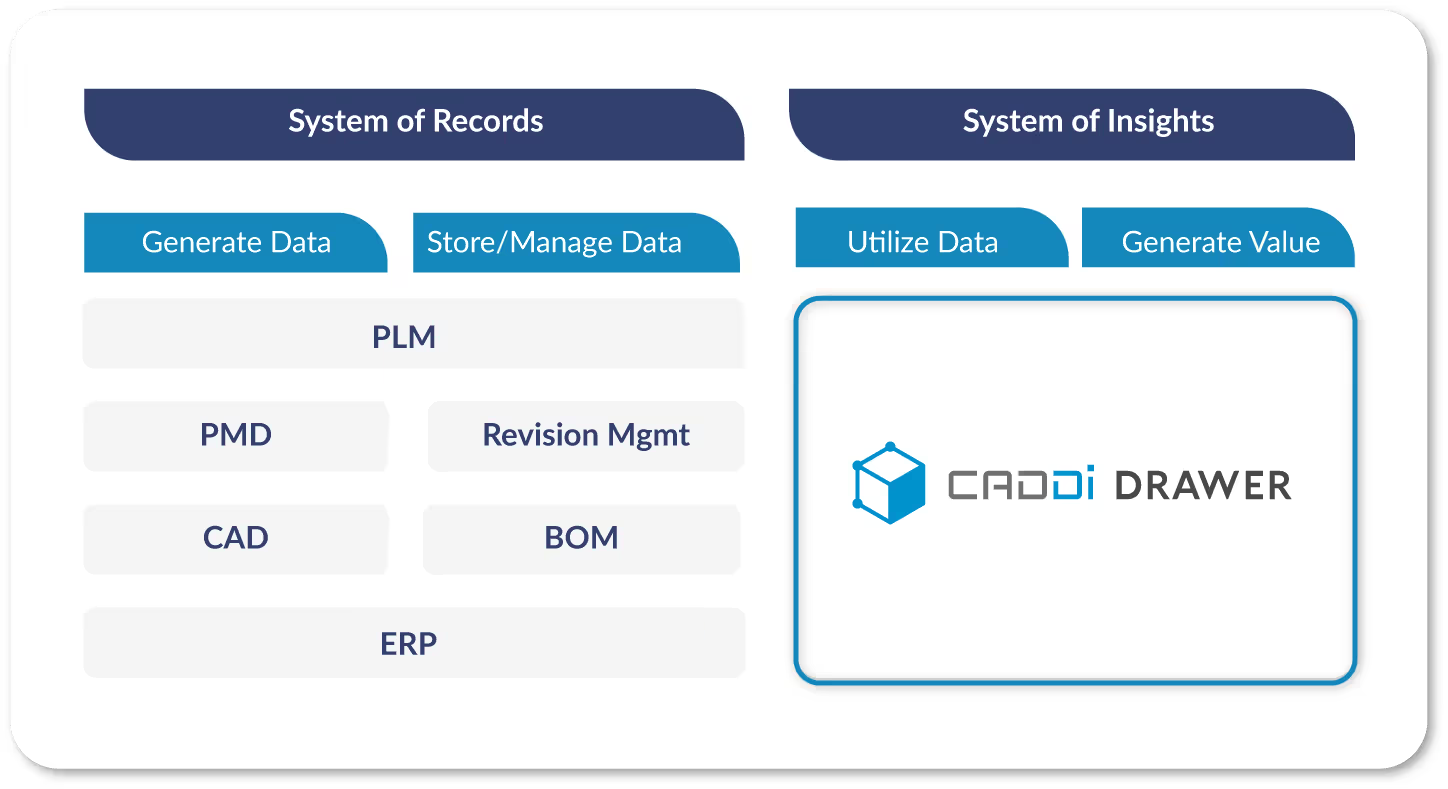
Facing challenges in procurement and supply chain efficiency?
Collaborative Planning, Forecasting, and Replenishment (CPFR) might be the solution. Through real-world successes like Procter & Gamble and Wal-Mart, which saw inventory reductions and forecast accuracy improvements, to Cisco’s 45% inventory cut, CPFR proves its worth.
This strategy is not just about technology but also trust, commitment, and strategic collaboration, aiming to streamline operations and enhance partner relationships for procurement managers.
The Essence and Evolution of CPFR
At its core, CPFR is a business practice that harmonizes the efforts of various trading partners in the planning and fulfillment of customer demand. The concept isn’t just a buzzword; it’s a strategic approach that links sales, marketing, and supply chain execution processes to boost availability while minimizing inventory, transportation, and logistics costs.
Originating from the Efficient Consumer Response (ECR) initiative, CPFR has evolved to address the limitations of traditional manufacturer-retailer relationships, which were often characterized by a lack of coordination and information sharing, leading to inefficiencies and increased costs.
Implementing CPFR: A Strategic Overview
Implementing CPFR requires a structured approach, starting with a clear understanding of its key components:
- Joint Business Planning: The initial stage where partners establish mutual goals and define strategies for achieving them. This process sets the stage for all subsequent CPFR activities, ensuring that every action aligns with the shared objectives of improving supply chain efficiency and meeting consumer needs.
- Demand and Supply Management: This involves the continuous exchange of forecast data and inventory levels between partners. By leveraging shared information, companies can make informed decisions, leading to more accurate demand forecasts and efficient inventory management.
- Execution: The practical application of the plans and forecasts, including order fulfillment and replenishment activities. This stage focuses on the physical movement of goods, ensuring that products are available where and when they are needed.
- Analysis: Continuous monitoring and analysis of outcomes versus expectations. This step involves reviewing performance metrics to identify areas for improvement and adjust strategies accordingly.
The benefits of implementing CPFR are compelling, including improved forecast accuracy, increased sales, inventory optimization, and enhanced partnerships between trading partners.
However, successful adoption hinges on several factors, including commitment from senior management, clear definition of roles and responsibilities, willingness to collaborate, readiness for a ‘win-win’ situation, and robust technical infrastructure.
Enhancing Collaboration Through CPFR
Trust and robust technological infrastructure form the bedrock of successful CPFR implementation. In a landscape where real-time data sharing and collaboration are paramount, establishing trust among partners ensures a seamless flow of information and fosters a cooperative environment.
Similarly, the deployment of advanced IT solutions and ERP software streamlines communication, mitigates risks associated with manual data handling, and enhances overall process efficiency.
Key Factors for Effective CPFR Implementation
To unlock the full potential of CPFR, several critical factors must be meticulously managed:
- Senior Management Commitment: The buy-in and active support from top management are crucial for driving the initiative forward. It underscores the strategic importance of CPFR and ensures the allocation of necessary resources.
- Clearly Defined Roles and Responsibilities: Establishing clear roles for each stakeholder prevents overlaps and confusion, facilitating smoother execution of CPFR processes.
- Willingness to Collaborate: A genuine readiness to work together, share data, and leverage collective strengths can significantly amplify the benefits of CPFR. This cultural shift towards mutual success is essential for overcoming traditional competitive barriers.
- Technical Infrastructure: The backbone of any CPFR initiative is its technical infrastructure, which includes data analytics tools, cloud computing platforms, and collaborative software. These technologies enable efficient data sharing and real-time decision-making.
Overcoming Challenges in CPFR
Despite its numerous benefits, CPFR is not without challenges. Common obstacles include:
- Data Sharing Concerns: Hesitation to share sensitive data can hinder the effectiveness of CPFR. Overcoming this requires establishing mutual trust and clear data governance policies.
- Alignment of Objectives: Ensuring all parties have aligned objectives can be challenging but is essential for the success of CPFR. This alignment prevents conflicts of interest and focuses efforts on common goals.
- Change Management: Implementing CPFR often requires significant changes in processes and mindsets. Effective change management strategies are necessary to address resistance and foster a culture of collaboration.
Leveraging Technology for CPFR Success
Information technology plays a pivotal role in facilitating CPFR by providing the tools needed for efficient data exchange and process management. Key technological enablers include:
- Collaborative Platforms: These platforms offer a shared space for partners to plan, forecast, and replenish inventory collaboratively. They help in breaking down silos and promoting transparency.
- Analytics and Big Data: Leveraging analytics and big data enables more accurate forecasting and decision-making by analyzing trends, patterns, and historical data.
- Cloud Computing: Cloud-based solutions offer scalability, flexibility, and accessibility, allowing partners to access shared data and applications from anywhere, at any time.
Realizing the Full Potential of CPFR: Industry Success Stories
While the theoretical benefits of CPFR are compelling, real-world applications provide the most convincing evidence of its effectiveness. Let’s look at two noteworthy examples where CPFR has been instrumental in transforming procurement and supply chain operations:
Procter & Gamble and Wal-Mart Partnership
One of the earliest and most celebrated examples of CPFR in action is the collaboration between P&G and Wal-Mart. This partnership focused on sharing information to better forecast demand and optimize inventory levels.
The result was a significant reduction in out-of-stock situations, improved supply chain efficiency, and a stronger partnership between the two giants. This collaboration has been widely recognized as a benchmark for successful CPFR implementation, leading to improved forecast accuracy by up to 20% and inventory reductions of 10-40% across various product categories.
Cisco’s Collaborative Planning Initiative:
Cisco Systems, a global leader in networking technology, implemented CPFR to enhance visibility across its supply chain. By collaborating closely with its suppliers and customers, Cisco managed to reduce its inventory levels by over 45%, while simultaneously improving customer satisfaction rates.
This was achieved through the use of advanced analytics and collaborative tools that enabled more accurate demand forecasting and efficient inventory management.
How CADDi Drawer Can Help
CADDi Drawer, a cutting-edge digital platform designed for the manufacturing and procurement sectors, directly addresses the pressing challenges in data management within CPFR. Its capabilities can provide an innovative solution to many of the hurdles discussed earlier, particularly those related to data inconsistency, fragmentation, and the lack of a centralized system for data sharing and analysis.
Streamline activities in the procurement process
The following features enable you to streamline the time-consuming tasks of data collection and organization in procurement operations.
- Price data and supplier information can be automatically linked to each drawing and can also be exported together.
- By using keyword searches combined with similarity searches, the time spent searching for drawings and data in procurement tasks can be reduced.

Enhancing Collaboration and Standardization
Collaboration and standardization across the supply chain are crucial for overcoming visibility challenges. CADDi Drawer fosters collaboration by enabling easy sharing and access to data among all supply chain participants. This collaborative environment ensures that everyone is on the same page, enhancing coordination and efficiency. Additionally, the platform supports data standardization, which is vital for integrating data from diverse sources and ensuring that it is comparable and actionable.
CADDi Drawer serves as a System of Insights (SoI), designed to leverage data primarily managed and stored by Systems of Records (SoR), like those represented by ERPs. Utilizing data stored in SoRs and data extracted and structured from drawings by CADDi Drawer, it supports procurement intelligence processes, including analyses and data processing for supplier selection and management, RFQ creation, and quote evaluations.

Ready to see CADDi Drawer in action? Get a personalized demo.
Subscribe to our Blog!
Related Resources


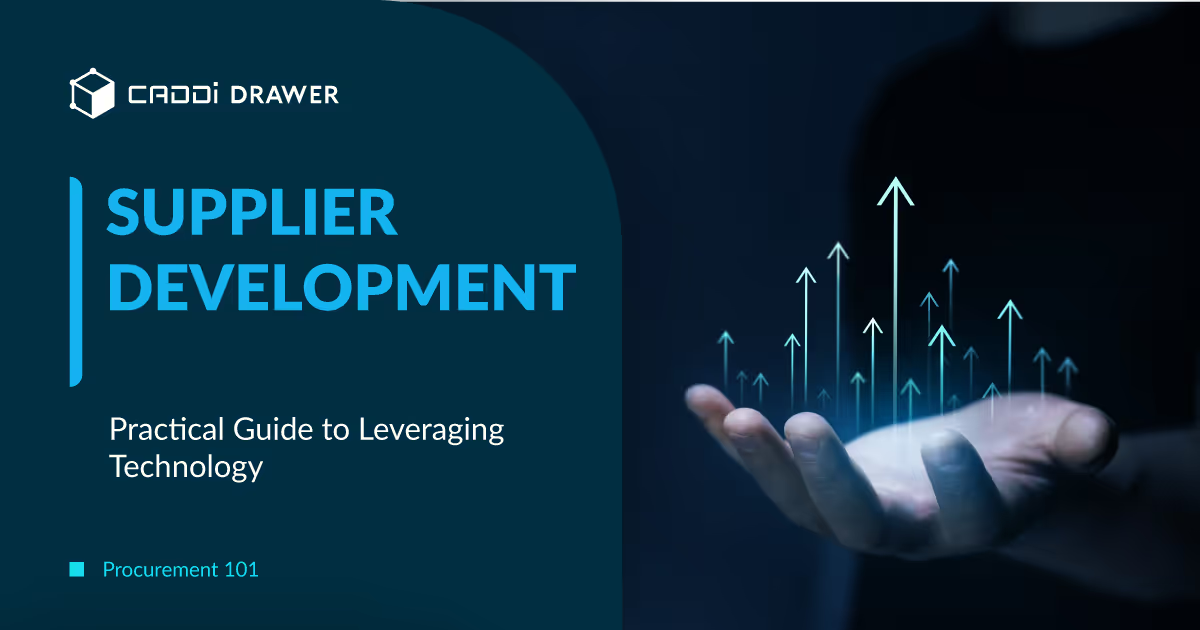

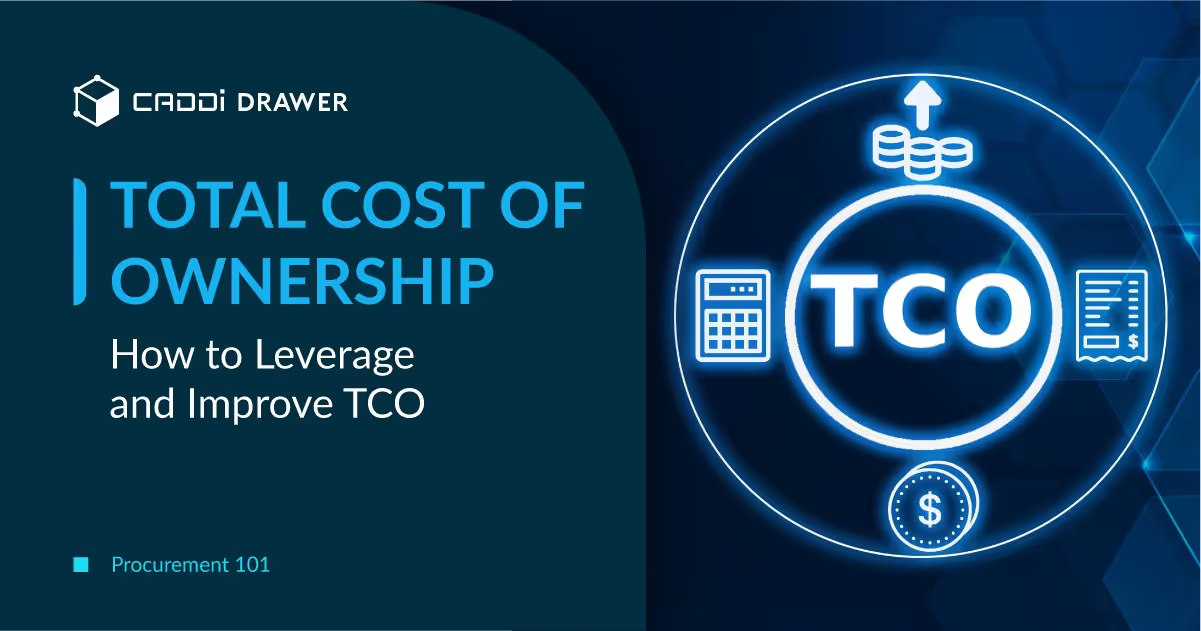



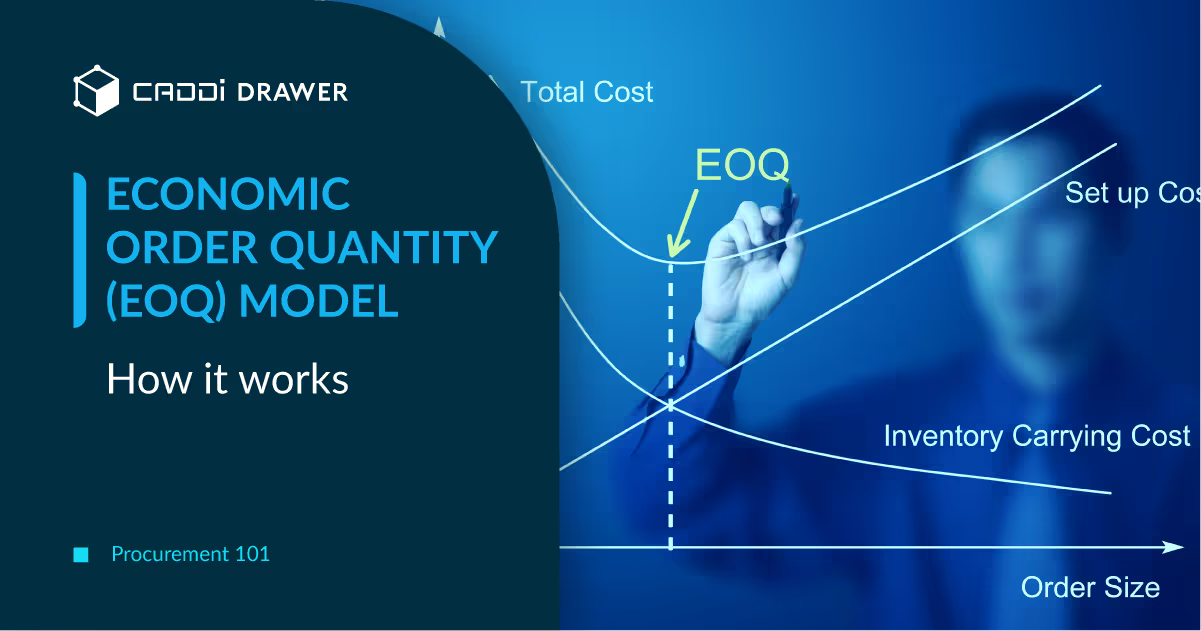



.svg)



.svg)
.svg)
.svg)


